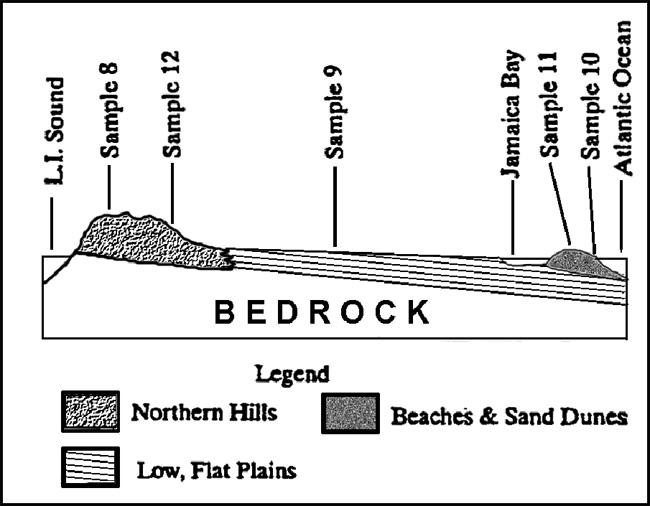GEOLOGY OF BROOKLYN AND QUEENS |
||||
In most areas of Manhattan and the Bronx, bedrock is at or close to the surface of the earth. In Brooklyn and Queens, bedrock is buried by significant thickness of sediment. The depth of the bedrock in these boroughs may be seen in the figure below. |
||||
|
|
||||
| Generalized north-south geologic section and topographic profile across western Long Island (Brooklyn and Queens), showing locations at which samples were collected. | ||||
|
|
||||
| Map showing sample locations. | ||||
|
|
||||
| Because bedrock is not exposed at the surface, hypotheses other than differential erosion of bedrock must be sought to explain the landscape. Three major landscape features occur: | ||||
| 1. Hills that dominate the northern parts of the borough. | ||||
| 2. A low, flat plain that slopes gently southward from the foot of the hills towards the south shore of Long Island. | ||||
| 3. A series of narrow beaches and dunes that run along the south shore. | ||||
|
|
||||
| Describe the sediment samples and note their locations in Figures 2 and 9. In your description, pay special attention to the features that distinguish each type of sediment from the others: | ||||
| x presence or absence of layering | ||||
| x general color | ||||
| x grain size | ||||
| x uniformity of grain size | ||||
| x the presence of shells or shell fragments | ||||
| x whether one, several, or many different mineral species are present | ||||
|
|
||||
| Use the following table to assemble your data. | ||||
|
|
||||
 | 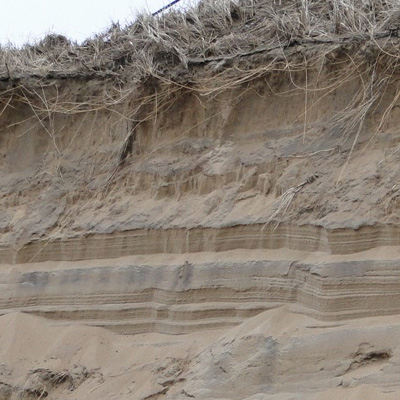 | |||
SAMPLE LOCATION : 8 | SAMPLE LOCATION : 9 | |||
 |  | |||
SAMPLE LOCATION : 10 | SAMPLE LOCATION : 11 | |||
| Explain the differences between the beach and dune sediment in terms of their origin. | ||||
| ________________________________________________________________________ | ||||
| ________________________________________________________________________ | ||||
| What geologic process is most likely to have deposited the sediment out of which the plain is made? Justification? | ||||
| _________________________________________________________________________ | ||||
| _________________________________________________________________________ | ||||
|
|
||||
| Boulders (some of them are ten feet in diameter) are found mixed in with the sediment out of which the hills are made. Boulders are also found in Manhattan and the Bronx, resting on bedrock. In those boroughs, some (but not all) of the boulders are found at the very tops of hills. | ||||
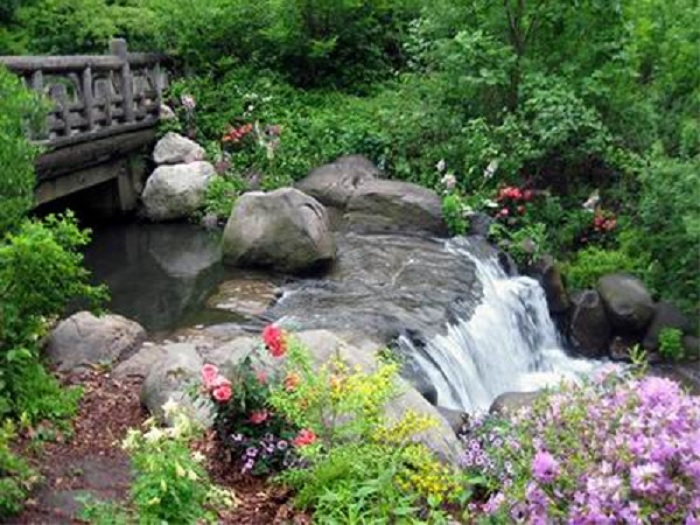 |
||||
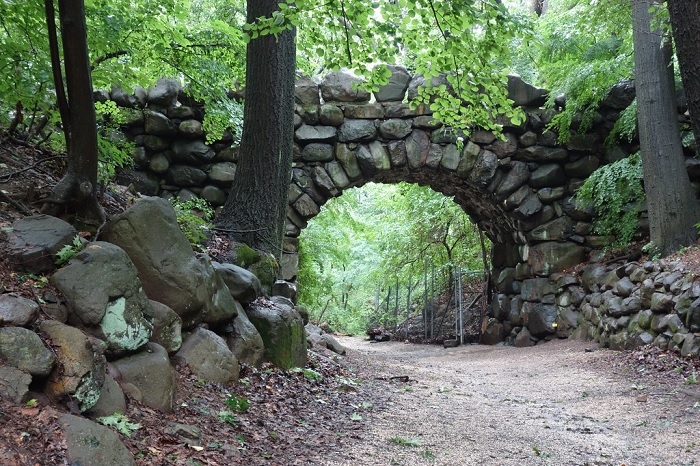 |
||||
| Boulders made out of the rock types comprising samples 4, 5, 6 and 7 are also found in the hill sediments. Where, with respect to the Hudson River, is bedrock of the same compositions as samples 4, 5, 6 and 7 found? | ||||
| _________________________________________________________________________ | ||||
| _________________________________________________________________________ | ||||
|
|
||||
| The boulders in the hill sediments must represent pieces of bedrock separated from the bedrock and transported to their present sites in the northern hills of Brooklyn and Queens. | ||||
| What geologic agent is capable of moving boulders of this size for several miles? Geologic Agent: Wind, Flowing Water, or Glacier Gravity _________________________ | ||||
| Is this geologic agent at work in this region today? Yes or No ________________ | ||||
|
|
||||
| Where would you go to determine what evidence is needed to support your hypothesis as to how the boulders were transported? | ||||
| _________________________________________________________________________ | ||||
| _________________________________________________________________________ | ||||
|
|
||||
| In terms of your hypothesis regarding the transport of boulders, explain the following: Why is bedrock at or near the surface in Manhattan and the Bronx? | ||||
| _________________________________________________________________________ | ||||
| _________________________________________________________________________ | ||||
|
|
||||
| Why are the boulders (and the rest of the sediment mix in which they occur) present in northern Brooklyn and Queens? Why is this area higher and hillier than the area to the south? | ||||
| _________________________________________________________________________ | ||||
| _________________________________________________________________________ | ||||
|
|
||||
| What is the origin of the flat plain in southern Brooklyn and Queens? Does this theory of origin fit in with your earlier idea as to the agent that deposited the sediment in this area? | ||||
| _________________________________________________________________________ | ||||
| _________________________________________________________________________ | ||||
|
|
||||
 |
| The Wisconsin Ice Sheet, the last of many glacial advances that started at about 90,000 years ago and which stretched down from eastern Canada and advanced as far south as New York City. These glaciers left their marks on the city, depositing rock and debris and accounting for the hilly areas that run straight in the northern part of Brooklyn, Queens, Nassau and Suffolk forming the Ronkonkoma Moraine. During a period of warmth and retreat the glaciers finally begin their final retreat at about 18,000 years ago. In New York City, the Wisconsin Ice Sheet was about 2,000 feet thick (in the Adirondacks it was over 5,000 feet thick and perhaps as much as 10,000 feet thick in Labrador). |
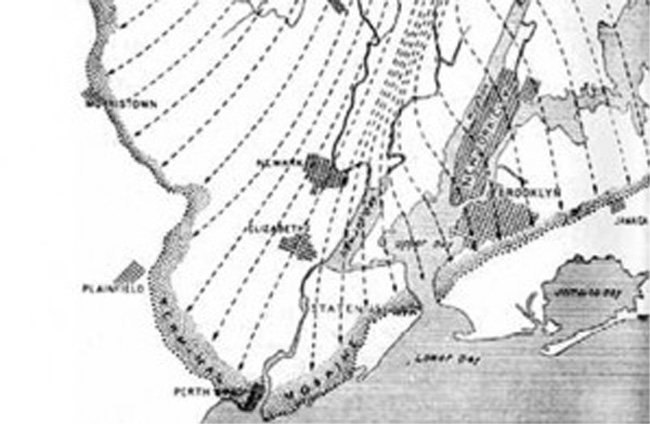 |
 |
 |
 |
| Glacial grooves and striations are sets of parallel channels which have been ground out of rock surfaces by boulders (grooves) and pebbles (striations) lodged in the moving sole of a glacier or ice sheet. The weight and pressure made by the colossal thickness of the glacier left its marks on the bedrock surface especially in Manhattan and the Bronx. | |
 |
|
| As the glacier moves, it behaves like a bulldozer since it will scrape clean the surface that the glacier traveled on; that is why in many parts of Manhattan and the Bronx the bedrock is at the surface and it is complete cleaned and free of top soil. | |
 |
| As the glaciers start to melt all that sediment created the outwash plains of Brooklyn and Queens (soft layers upon layers of unconsolidated sediments made of gravel, sand and silt). |
 |
|
| The construction of skyscrapers and subway tunnels is highly dependent on the type of rocks that is underneath the surface and the depth to reach this bedrock. In order to anchor skyscrapers and to dig tunnels we need to have very strong rocks underneath. For this reason in Brooklyn and Queens we don't have skyscrapers and in many parts of these boroughs the subway system has to go above ground. |
©David Leveson and David Seidemann - Brooklyn College - Earth and Environmental Sciences
